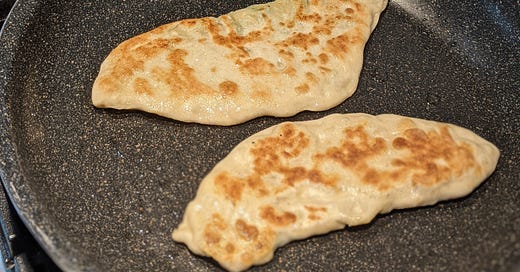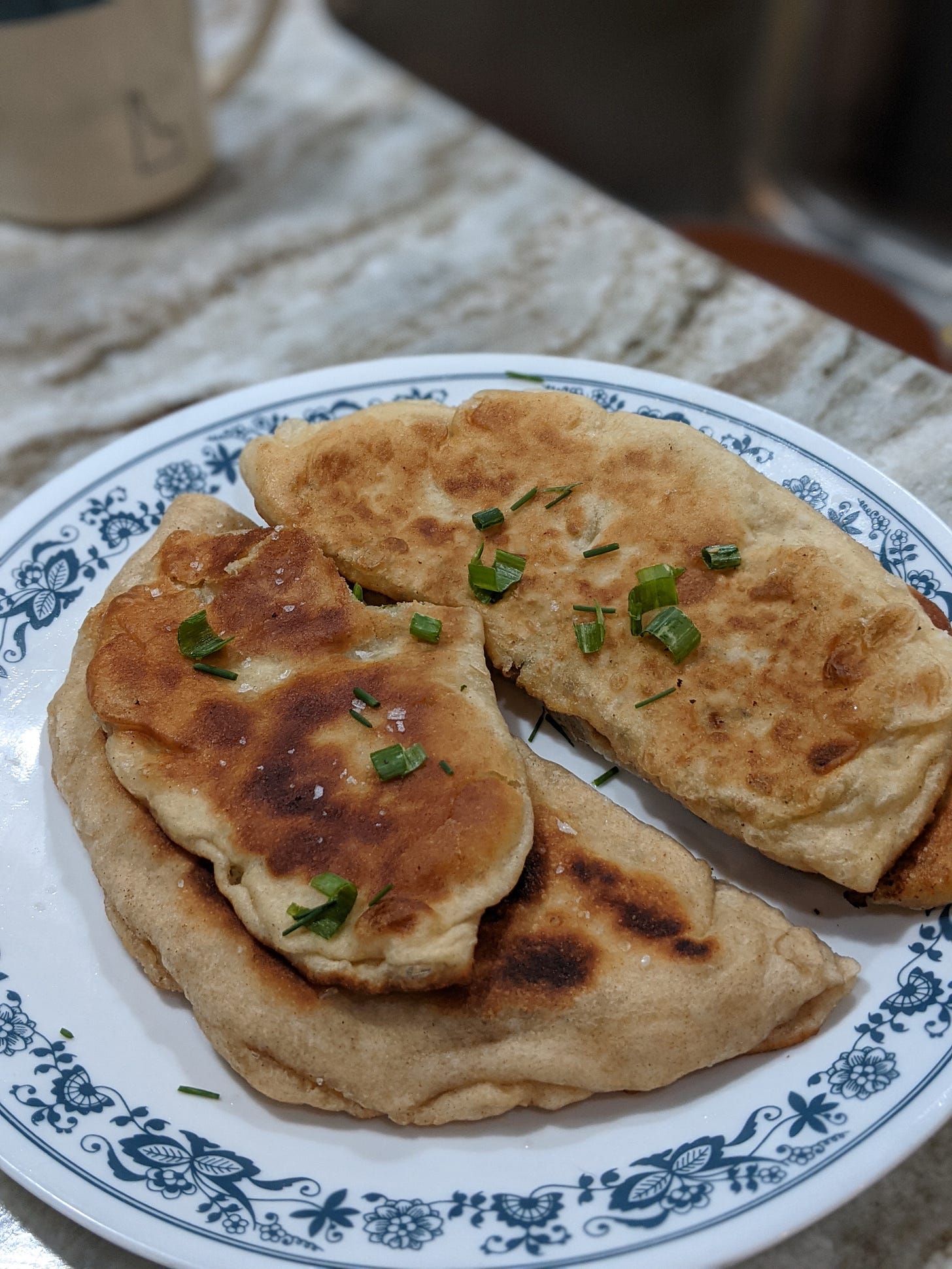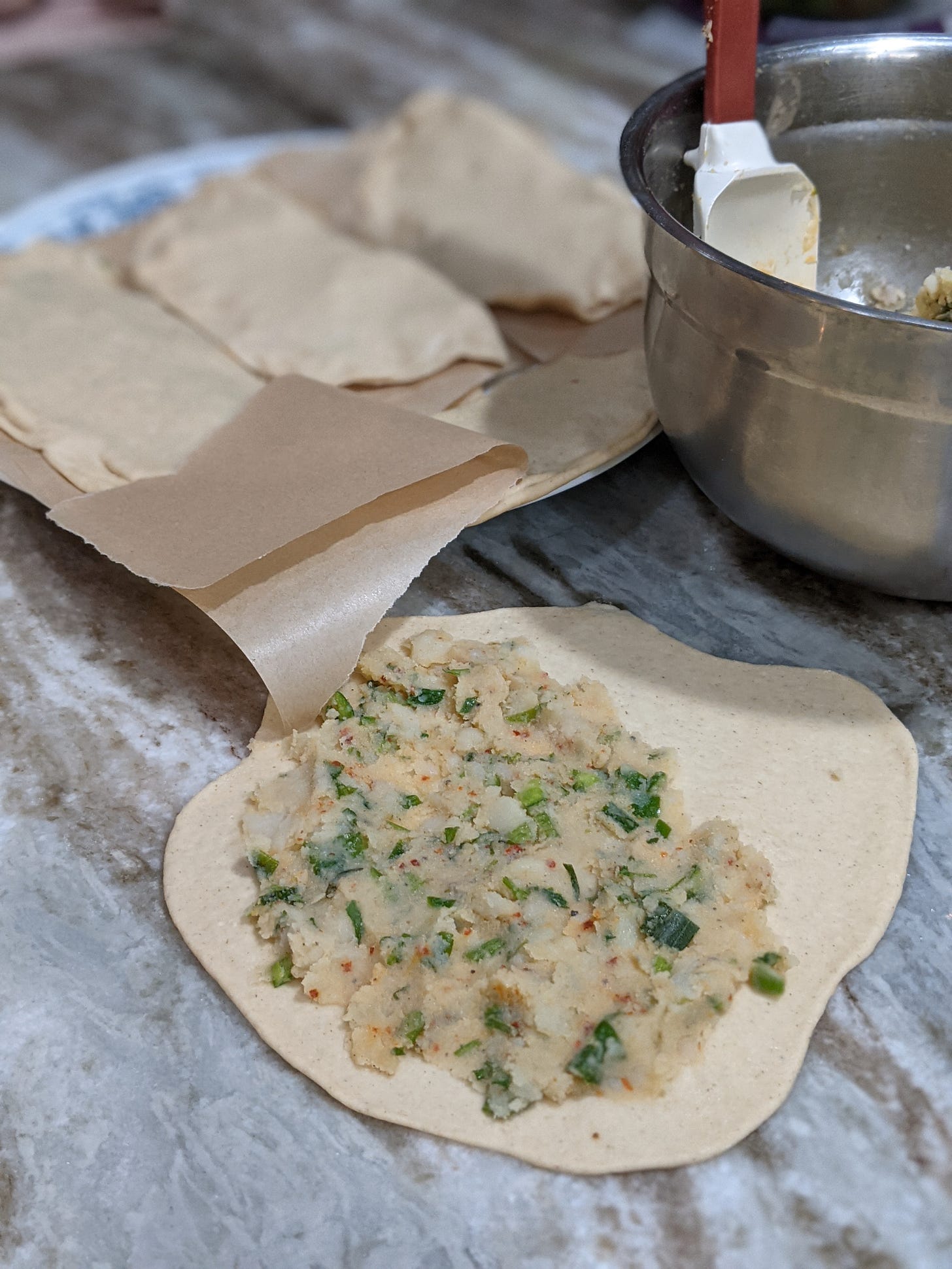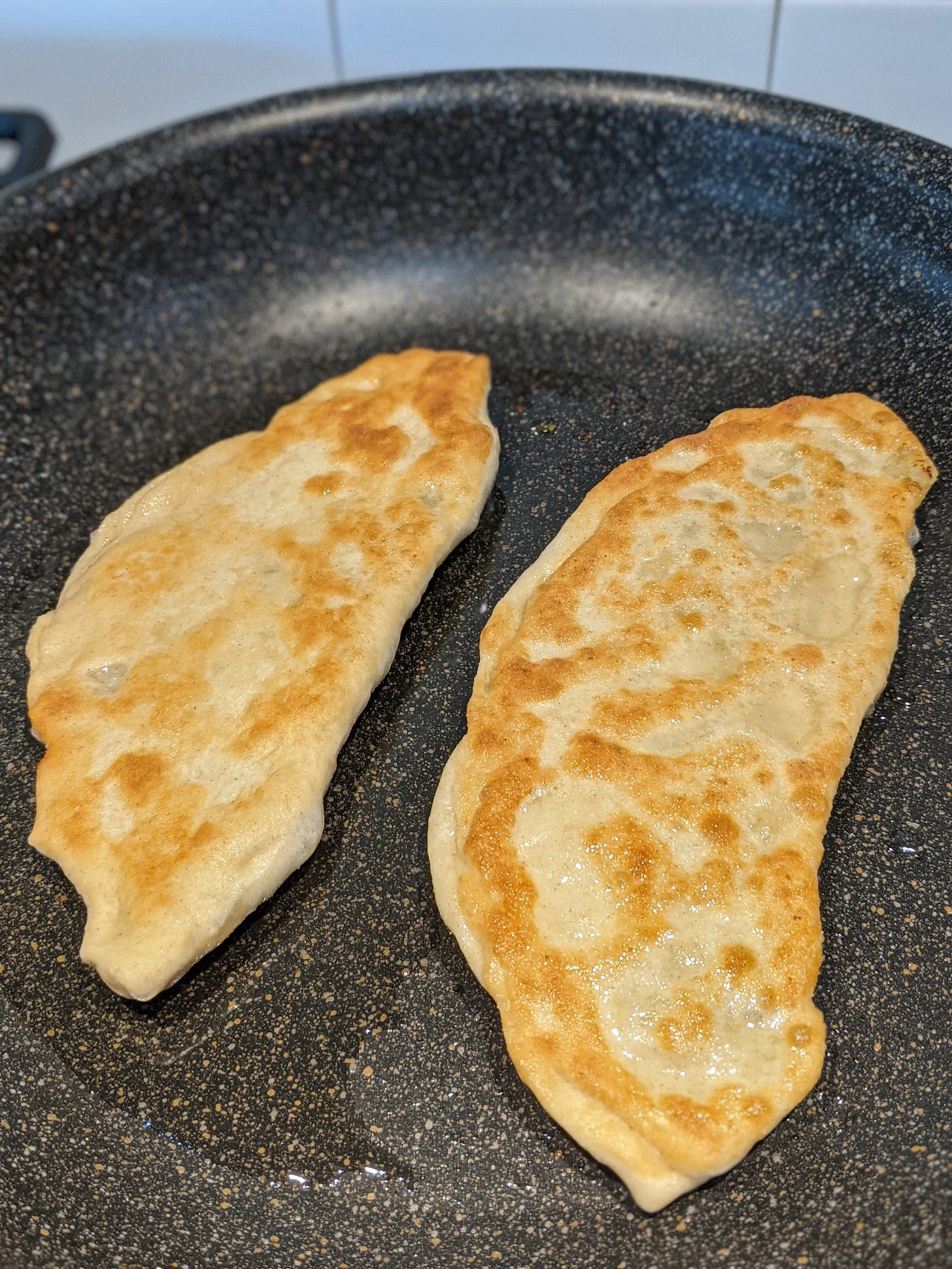“In Afghanistan, bolani is not only a popular street snack but it is also often prepared at home and usually served as a side dish. It is traditionally enjoyed warm, accompanied by coriander chutney and a creamy, mint-flavored Afghan yogurt dip called chakkah.”
I hadn’t planned on making Afghani bolani today. But somehow it just worked out.
Originally, I thought about making pierogi (Polish dumplings) with leftover potatoes that I would re-season and mash.
Then, I remembered how much my husband and I flipped for Sunshine Spice Cafe’s bolani three months ago while visiting Boise on a cosmopolitan food crawl.
That did it. I changed course in a hurry and wound up making two batches, the first from The cookbook on YouTube and the second from Pick Up Limes.
Turns out, bolani’s easier to make than I thought.
I expected to laminated the dough like Chinese scallion pancakes (or, heaven forbid, croissants) for that layered crispness. Or, at the very least, slave over the counter kneading for hours.
Nope. I just kneaded until the dough came together in a smooth, supple ball, about a handful of minutes.
But it’s a stuffed flatbread you fry up in a skillet on the stovetop. It’s technically not supposed to be a crispy pancake, but a stuffed flatbread. Some amount of chew to crisp is okay.
No matter how long I let it go (mine took way less than two-three minutes per side), though, I risked my bolani burning. If you reheat them in a toaster oven, they develop that crispy layer.
The hardest part is frying up the bolani. You want to check the time, but you must resist and just watch the dough. As soon as you see it turning golden brown underneath — and you will see it immediately — flip, then fry a little longer, nowhere near two minutes, or even one. Keep flipping until you get golden brown spots, then call it.
Frying up these flatbreads reminded me of making other flatbreads and flour tortillas from scratch. I just can’t seem to make myself believe they’re cooked through, just because they puff up and brown slightly.
But they do.
The YouTube recipe, using all-purpose flour, needed a tad more salt. Add a smidge more during the dough-making process, or sprinkle kosher or finishing salt on top of the finished bolani.
The Pick Up Limes recipe, with bread flour, had the right amount of salt. I’d say 9-10 grams salt per 400+ grams flour. (I add 11 grams of salt to 500 grams of flour for sourdough.)
For a chewier, stretchier texture, go with bread flour.
Toward the end of the second batch, I finally started running out of the leftover potato mash. I filled the last bolani with a smear, then rummaged in the fridge for matchstick carrots and zucchini I’d fried up the day before and grated mozzarella.
You can season the boiled potato with anything, really. I had lots of serrano, chives, and scallions from our garden. Those plus Aleppo pepper flakes did the trick.
My husband made more garlicky yogurt sauce (garlic, lemon juice, full-fat Greek yogurt or labneh, mint, salt and pepper, blended) for dip. We shared the second batch with our grateful neighbor friends who proclaimed them “amazing.”
You will too!
If I can make Turkish bagels (simit, pide) and now Afghani stuffed flatbread (bolani) — two of several specialty faves from Sunshine Spice Cafe in Boise — maybe I can tackle their Afghani dumplings (mantu) next.
My homemade simit and bolani are nowhere near the perfection of that Boise bakery-cafe, and I refuse to do hardcore French pastries (much too hard). So, I’ll still be going up there for my fix.
But in case I can’t, I know I can always make them here in the comfort of my own home, and share with people I care about.











